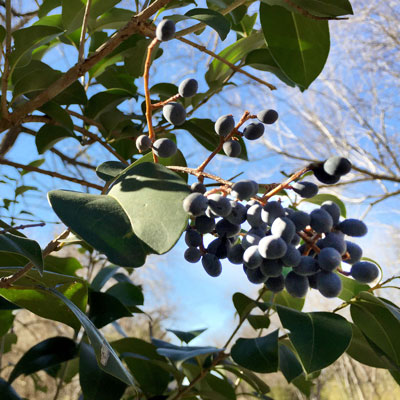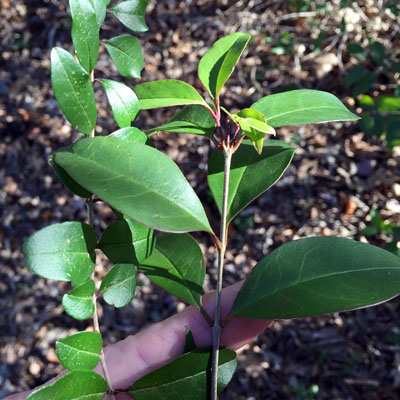From the Sperry Gardens: February 2015

When you come right down to it, many plant species that were originally introduced by gardeners have overstayed their welcome in Texas. Even bermudagrass has spread far and wide, enough so that many consider it to be as native to Texas as bluebonnets and Nolan Ryan.
Some people call these comparative newcomers “naturalized” plants. Others use harsher terms, boiled down for a polite publication to the word “invasive.”
I speak only for myself, but I feel that whether a plant is truly invasive or not depends on the local temperature ranges, soils and rainfall, among other things. What might be invasive in the Piney Woods forests probably won’t even survive in the arid prairies of West Texas, much less spread where it’s not wanted. In that regard, it would seem to me that there’s no good way to describe a plant as being “invasive” to the whole state of Texas.
However … two plants come pretty close to deserving that designation. Japanese ligustrum (Ligustrum japonicum) and Chinese privet (Ligustrum sinense) are taking the eastern half of Texas like nothing since fire ants.
Their dark purple fruit are favorites of birds, and as a result, the population explosion grows and grows.

(L) Chinese privet and (R) Japanese ligustrum.
Japanese ligustrum is the taller of the two, growing fairly quickly to 15 or 18 feet tall and almost that wide. It’s also less winter-hardy, although it rarely shows damage unless the weather has been extremely cold.
And the other plant, the smaller one, is perhaps even more invasive. I take a shortcut around southeast Denton when I go to the Denton State Supported Living Center, and those post oak forests are completely overrun with Chinese privet. Yaupon hollies where I grew up (Brazos County) do the same thing, but they’re true natives. They have a right to be there.
Closer to home, our neighbors across the road to the east have Japanese ligustrums lining their country fence. Birds planted those from some unknown source originally, and now new plants are coming up all over our rural neighborhood.
We have 11 acres of pecan woodlands, and over the past five years, I’ve seen literally hundreds of these two plants sprout and start growing. Those years have been fairly dry, so the invaders haven’t grown excessively. However, the Japanese ligustrums began to reach up into the trees’ canopies and the privets started springing up all over our hillsides.
I was afraid they were going to take over, so this week we declared war. I hired two men to pull and dig out all the privets and most of the Japanese ligustrums. Those ligustrums that remain are important to our maintaining privacy along the county road, so I left them after having them cut back by 70 to 80 percent. I will never allow them to flower and produce fruit.
So while I don’t speak against Chinese pistachios, nandinas and other plants that have been known to give nothing more than a chance seedling, these plants that sprout up in thick masses do need to be eliminated. I’m not going to be able to win the overall war against privet and Japanese ligustrum, but I’m certainly determined to defeat the warriors that have come onto our property.

